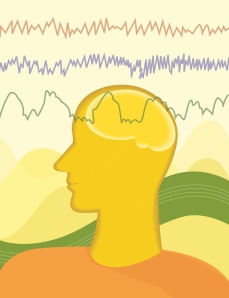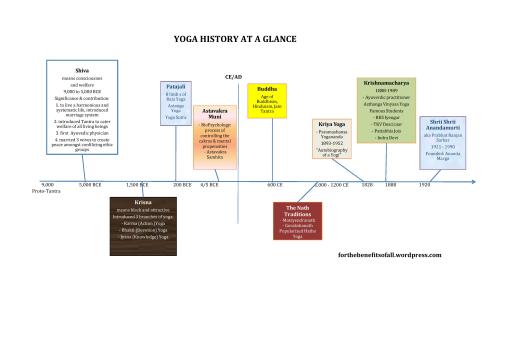The Five Kosa (layers) of the Mind
The 5 layers* are:
- The Conscious Mind: Layer of Desire
- The Subconscious Mind: Recollection and Reflection
- The first layer of Superconscious Mind: Layer of Intuition and Creative Insight
- The second layer of Superconscious Mind: Discrimination and Non-attachment
- The highest level of Superconscious Mind: Yearning for the Infinite
(*These “layers” are not physical or visible layers, rather they are concept to differentiate states of one’s mind.)
The first layer, the Conscious Mind, also called “Kamamaya kosá”. Kama means desire and it is this layer of desire which controls and guides our relationship with the exterior world. All actions we perform throughout the day and throughout our lives are driven by desire for comfort or pleasure, to avoid discomfort or pain.
Our 5 sensory organs (eyes, ears, nose, tongue and skin) sense the stimuli from external world, signal to the layer of desire, to activates our 5 motor organs (hands, feet, vocal cord, sexual and excretory organs) to materialise the desire or aversion. However, human existence is much more than just engaging in physical activities in response the external stimuli, we should instead, take control and charge of our conscious mind.
The subconscious mind, also known as subtle mind, is more expanded than the conscious mind. It carries the functions of: (a) deep thoughts or reflection, and (b) recollection.
This layer called “Manomaya kosá”, means composed of manas or mind, handles the analytic reasoning and problem-solving of ordinary life and society. According to yoga, there are 2 kinds of memory: cerebral memory and extra-cerebral memory.
 It is believed that learning and memory is the preservation of vibrational impression of past events received through the sense organs and agitates the nervous system and conscious mind. Recollection of cerebral memory is the re-expression of this vibration in the brain, so the past experience is “relived”.
It is believed that learning and memory is the preservation of vibrational impression of past events received through the sense organs and agitates the nervous system and conscious mind. Recollection of cerebral memory is the re-expression of this vibration in the brain, so the past experience is “relived”.
Extra-celebral memory is the recollection of an impression that existed prior to this body, i.e. past-life memories. Records of reincarnation from all over the world, evidenced the case of past-life memories.
Dreams take place in this layer. During the day, the images and events are stored in the subconscious mind and during sleep these impression are revived in the brains as dreams. Dreams stimulation may become more agitated if the nerves are tense or weak, or there is anxiety or intense mental concentration, or indigestions.
Normally the images of our subconscious remains in the mind, but if the mind is concentrated with fear, one may cause the image to be projected outside. So the “ghosts” that haunts us for ages are merely hallucinations of agitated minds. Hypnotism is another phenomenon of the subconscious mind, in which the powerful subconscious mind of one person influences the conscious mind of another.
Our aim is to become the master of our own mind and attain freedom from all external bondages. So the answer to the first question is we are going beyond the Superconscious Mind.
Beyond the subconscious mind, is the layer of intuition and creative insight, also known as “Atimánasa kosá”. It literally means supramental layer, and it is the first layer of superconscious mind or the causal mind.
According to sages, there is a Cosmic-Mind, an infinite storehouse of all knowledge, where past, present and future merge into one super-stratum beyond space and time. Those who can transcend the lower conscious and subconscious level of their mind, immediately realise this superconscious Cosmic-Mind.
Few are able to enter this subtle psyche realm, those who may have entered this state had been through various experiences, such as a sudden effortless “flash of insight” beyond logic or rational analysis, intuitional dreams, extra-sensory perception (ESP), focus with intense concentration on an object or through misuse of misuse drugs to induce glimpse of higher consciousness.
Some may gain clairvoyant inspiration from the superconscious mind, however if the person is not well-trained, the experience may be distorted or incomplete. It may also be dangerous as they may loss control of their own overwhelming supramental forces, and such situations have been labeled as being “possessed by spirits”.
Many experimental studies have shown that meditation is superior replacement for the drug “high” and even drug-abusers give up drugs for meditation. The observation supports “the contention that the highs obtainable by meditation are better than highs obtainable through drugs”.
Yogis have emphasised the importance of gradual and careful prepartion of the mind and body to receive and control the unlimited powers of the superconscious state.
The second layer of causal mind is called “Vijinánamaya kosá”, literally means “special knowledge layer”, where the mind is expanded to this subliminal layer of superconscious mind. This sublime level of awareness goes beyond clinging to possessions, wealth, loved ones and attachment to one’s life and identity. One realises the impermanence of things and does not grasp to the notion of self and worldly concerns, develop renunciation.
Renunciation however should not be confused with becoming indifferent or rejection of pleasure. It is simply about dealing with life without attachment and aversion. Those who are truly non-attached embrace life and see all objects and creatures of the world as part of the universal consciousness and they enjoy inexhaustible bliss.
When one experiences the blissfulness, yearning for the infinite splendour arises. The mind surges into a single-pointed desire to elevate into the highest layer of the superconscious mind that is the “Hiranmaya kosá” or golden-coloured layer. The yearning is described as an intense desire for breath when being suffocated.
Therefore, the author conclude that to transcend one by one from the grosser levels of existence until one reaches the Supreme State, where the mind merges with the universal consciousness, as the goal of our journey.
In our ordinary state of ignorance, we view ourselves to be different and separate from the world and from our fellow human beings. We live in a world which focuses on material success and where conflicts arise due to individualistic ideology. Most of us have mistook happiness to be something that we have to pursue externally. Instead, today we need to work towards a world with greater humanity and to elevate our minds towards social harmony.
The author described the attributes of our mind and hopefully by understanding and learning to manage these aspects, we would be encouraged to make the changes we want within us, within our mind.
Part 3 and Part 4 of this series of post talk about how to practice to gain the happiness.
My Thoughts:
Indeed happiness from external sources is only temporary. If we observe carefully, all events and matters do not exist on its own, they are dependent-arising (results of causes and effects). In order to gain happiness, we need to transform our mind, to see every situation as an opportunity to improve our environment.

















